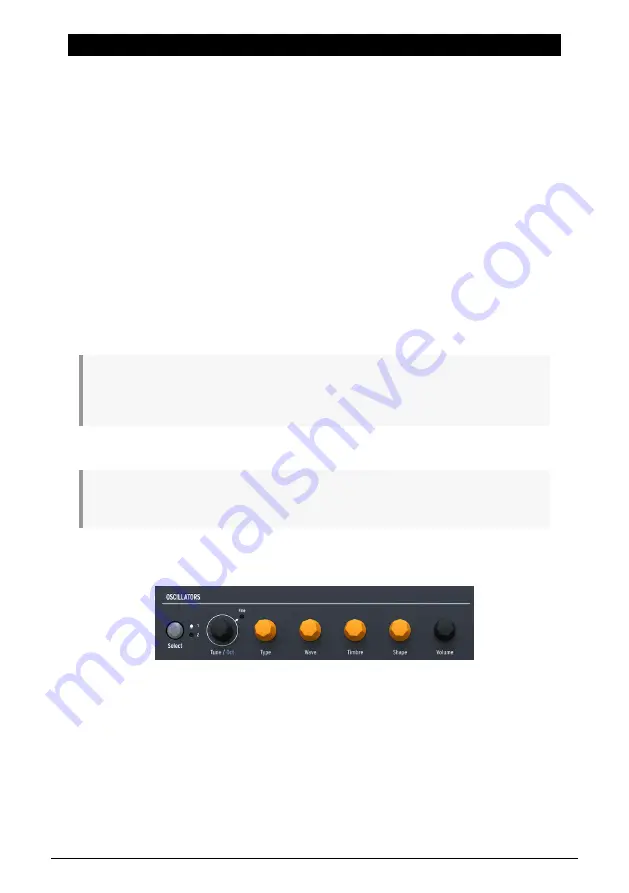
5. THE DIGITAL OSCILLATORS
Every subtractive synthesizer starts with a raw waveform and then shapes it over time,
whether in frequency content (using a filter) or in loudness (using an amplifier). While filters
are of paramount importance in shaping analog tone and amplifiers of various sorts appear
everywhere inside a synthesizer, the sound always starts with an oscillator, and the more
flexible the oscillator, the more versatile the sound.
Unlike analog oscillators, which have a rich harmonic character but usually a fairly limited
number of basic waveforms, a digital oscillator can create a waveform in many different
ways. Some digital synthesizers use physical modeling to emulate basic synthesizer waves.
Others use frequency modulation (FM), or the Karplus-Strong mathematics of a plucked
string, or sums of harmonics, or...
The core of MiniFreak's freakiness is its pair of
Digital Oscillators
, which provide all of the
synthesis types mentioned above and many more. Some of them are familiar from the
synthesizers that made them famous, and others are exciting and new.
While the MicroFreak could create a wide variety of sounds from its single Digital Oscillator,
the MiniFreak has two of them. That greatly expands the possibilities, because now it´s not
only possible to use them as two oscillators, but also for one Oscillator to modulate the other
one, or do even more cool tricks. Osc 2 takes advantage of this by providing some extra
models that are designed to complement Osc 1 in various ways.
Arturia would like to extend its thanks to
, who granted permission to include
several different oscillator Types from Mutable's amazing Plaits Eurorack Macro-Oscillator module.
These include: VAnalog, Waveshaper, Formant, Chord, Speech, Modal and Two Operator FM.
Three of the models – BASS, SAWX, and HARM – were contributed by
, taken from
their Vert Iter Legio Eurorack module.
5.1. The Controls
The Oscillators section starts with the
Select
button and the
Tune/Oct
encoder. Note that
long pressing the
Select
button refreshes the display with the current Osc parameters. This
prevents you to from having to edit a value to be able to monitor the current state of the
controls. With these, you can choose the oscillator you're editing, then tune it up or down by
±48 semitones in steps of one semitone, one octave, or one cent (100 cents = 1 semitone).
The four knobs in the middle are colored orange for a reason: they're the heart of the
Oscillators, and therefore the heart of the MiniFreak.
•
Type
chooses the model that the Oscillator will use to generate sound. We'll
discuss them all, one at a time, in just a moment.
Arturia - User Manual MiniFreak - The Digital Oscillators
20
Summary of Contents for MiniFreak
Page 1: ...USER MANUAL _MINIFREAK...






























